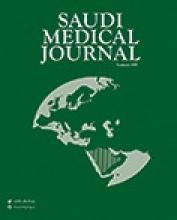SEPTEMBER 14, 2020 - Atherosclerosis in the iliac artery (main pelvic artery towards the leg) may result in narrowing or obstruction (occlusion), leading to reduced blood flow to the leg. This is called iliac artery occlusive disease. Iliac artery occlusive disease may lead to symptoms of pain in the legs when walking (intermittent claudication), pain at rest, or ulcers of the foot or leg. A range of surgical and endovascular (from inside the artery, e.g. angioplasty) treatment options are available. Open surgical procedures have excellent patency rates (percentage of the vessels that remain open) but at the cost of substantial illness and death. Endovascular treatment has good safety and short-term effectiveness with decreased illness, complications and costs compared with open surgical procedures. Percutaneous transluminal angioplasty (PTA; dilation of the artery with a balloon) and stenting (insertion of a small mesh tube) are widely used endovascular treatment options for iliac artery occlusive disease. A narrowing or obstruction of the iliac artery can be treated successfully by PTA alone. If PTA alone is not successful, an additional stent can be placed. Alternatively, a stent could be placed on its own to treat an iliac narrowing or obstruction (this is called primary stenting (PS)). However, there is limited evidence to prove which endovascular treatment strategy is better for lesions that restrict the iliac arteries. This review investigates whether it is better to place a stent in the first instance, or only under particular circumstances.
Study characteristics and key results
We found no new studies for this update. Previously, we had identified two studies with a combined total of 397 participants relevant to this topic. Combining the data was not possible due to the differences between the two included studies. The evidence in this Cochrane Review is current to 24 September 2019.
For the following outcomes of interest, no clear differences emerged between the two types of treatment: technical success of the procedure, improvement in the severity of the arterial occlusive disease, or patency of the treated vessel. However, in one study, which only included iliac artery occlusions, fewer complications were observed in the group of participants treated with PS. Neither study reported on delayed complications. One study reported on reintervention, and resolution of symptoms and signs, with no evidence of a difference detected between the PS group and the PTA group. Neither study reported on improvement in walking distance. More research on this subject is necessary.
Reliability of the evidence
Both studies had some risk of bias relating to selective reporting and non-blinding of participants and personnel. Both studies occurred in the 1990s and techniques have since evolved. We considered the overall certainty of the evidence to be low due to this risk of bias, the small number of included studies and the differences in the types of patients that were included.
Full citation: “TAngioplasty versus stenting for iliac artery lesions”. Hidde Jongsma, Joost Bekken, Ninos Ayez, Cornelis J. Hoogewerf, Vincent Van Weel, Bram Fioole. Cochrane Systematic Review; Published Online: December 01, 2020. (DOI: 10.1002/14651858.CD007561.pub3).
Copyright © 2020 The Cochrane Collaboration. Published by John Wiley & Sons, Ltd., reproduced with permission.
- Copyright: © Saudi Medical Journal
This is an open-access article distributed under the terms of the Creative Commons Attribution-Noncommercial-Share Alike 3.0 Unported, which permits unrestricted use, distribution, and reproduction in any medium, provided the original work is properly cited.






